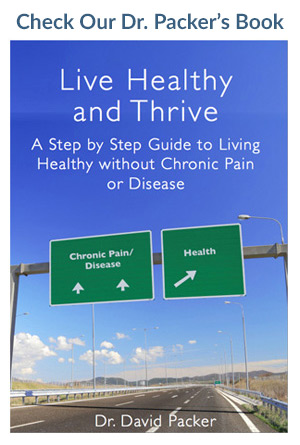 Whether you need to move heavy loads for work, or you just need to bring in a large package delivered to you, you will likely need to pick up a heavy object at some point. However, lifting heavy objects can be hard on your back, and can worsen existing back problems. Knowing how to safely lift heavy objects is key to keeping your back healthy.
Whether you need to move heavy loads for work, or you just need to bring in a large package delivered to you, you will likely need to pick up a heavy object at some point. However, lifting heavy objects can be hard on your back, and can worsen existing back problems. Knowing how to safely lift heavy objects is key to keeping your back healthy.
As a licensed chiropractor in the Chesapeake region of Virginia for more than two decades, I’ve seen many back injuries from improper lifting. In this article, I will show you how to safely lift an object and protect your back at the same time.
Step One: Evaluate the Object
Taking the time to evaluate the object that you need to lift can save you both an injury and hassle. Is the object small enough to be carried by one person, or will it be a two-person job? Will you be able to see the path ahead of you when you pick it up, or is the object too tall for you to see clearly? Making a plan can help protect your back from pain and prevent falls.
Step Two: Stretch
Performing warm-up stretches can help make sure your muscles are limber and flexible. This can help you avoid muscle strain and injury when lifting. Even if you have been moving around a lot already, take the time to stretch your arm, leg, and back muscles as these will be the ones you rely on when you lift the object.
Step Three: Get a Firm Grip and Make A Wide Stance
Making sure you have a firm grip on the load is important. Not only will this help prevent you from accidentally dropping it, but it can prevent you from unexpectedly shifting position and putting a strain on your muscles.
Likewise, making sure that you have your feet in a wide stance, with one foot slightly ahead of the other, can help you keep your balance as you are lifting the object.
Step Four: Squat, and Lift With Your Legs
When you go to lift the object, make sure to squat. This will ensure your legs – not your back – does the heavy lifting. Do not bend at the waist to pick up the object as this will strain your back.
Step Five: Keep The Load As Close To Your Torso As Possible
Keeping the load as close to your body as possible helps to avoid strain on the back and brings the object closer to your center of gravity. You should stand as close to the load as possible when you lift it and keep it close to your torso while you carry it.
Likewise, you should avoid lifting heavy objects that are at shoulder height or carrying objects on your shoulders. This puts an extra strain on your back and can lead to injury.
Step Six: Ensure Visibility
Make sure that you can see clearly over the top of the load while you are carrying it. This can prevent you from tripping and falling, or even injuring someone else.
Step Seven: If You Need To Change Direction, Let Your Feet Lead
If you need to change direction while carrying a load – for example, turning down a hallway – avoid twisting and turning your back. Your back was not designed for that kind of strain and can be injured. Instead, let your feet change direction, and let your body follow without twisting it.
Step Eight: Squat To Set the Object Down
When it comes time to set down the load, put it down the same way you picked it up. Avoid bending at the waist, as this will cause back strain. Instead, squat as you carefully lower the object.
Alternatives to Lifting: Pushing and Equipment
Always consider whether you need to lift the object, or if another strategy can do the trick. For example, you may be able to push the object across the floor. It is important to always push – not pull – the object, as pushing allows your legs to do the work and relieves strain on your back. Using equipment like a cart or a trolley can also help you avoid lifting, and lets the equipment do the work for you. In some cases, you might be a good candidate for a back support brace: your chiropractor can help you choose one that is right for you.
Protecting Your Back With Precision Spinal Care
As a certified NUCCA chiropractor and spine management physician, I work closely with you to improve your back health.
To accomplish this, during your first visit, I will do a thorough examination. Afterward, I will go over my evaluation with you in detail. Together, we will set reasonable expectations and milestones. We will also put together a treatment plan that meets your care needs, taking the root cause of your condition into account. I will reevaluate you to make sure you are meeting your goals.
My experience and expertise in spinal biomechanics allow me to competently and safely address your back and neck issues. I am a trauma and hospital-qualified spine management physician. I have credentials in MRI spine interpretation, spinal biomechanical engineering, and orthopedic testing through the Academy of Chiropractic. I am also a fellow in Spinal Biomechanics and Trauma which is recognized through the SUNY Buffalo Jacobs School of Medicine.
If we determine that chiropractic is not the best solution for your needs, I will recommend the type of specialist who is most appropriate for you. I may also recommend other specialists that can be used in conjunction with chiropractic care to help you meet your needs.
We understand that you need to explore all your options when you are trying to treat your pain. At Precision Spinal Care, we are happy to help you determine the best way to address your specific needs and discuss all the options with you and your family.
Call our office at (757) 382-5555 to speak to the doctor or set up a consultation. You can also set up an appointment online.

